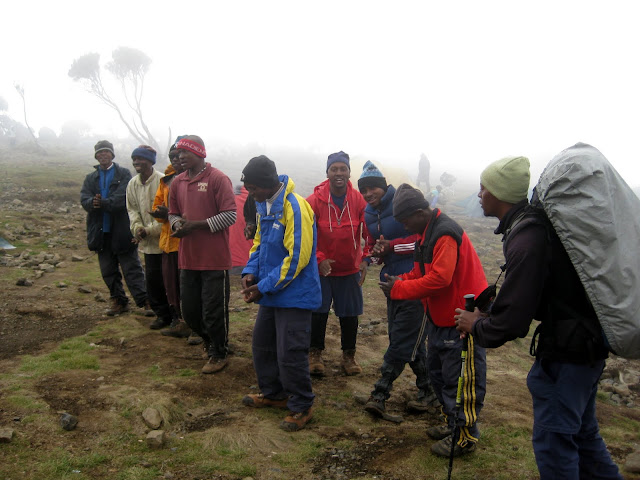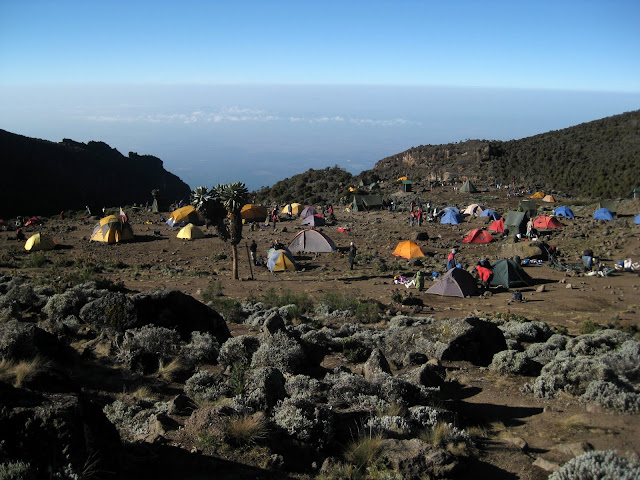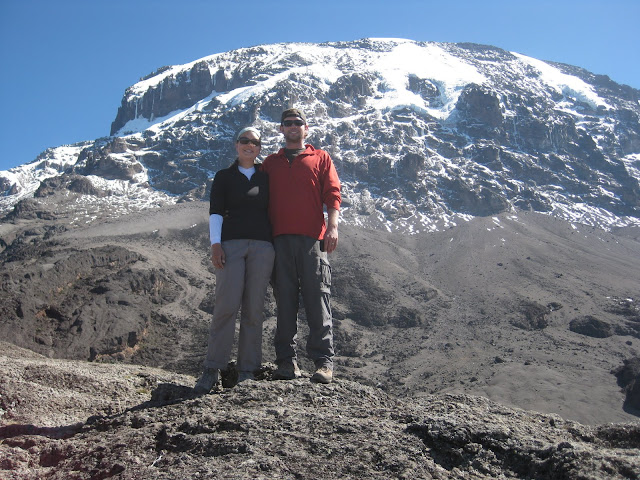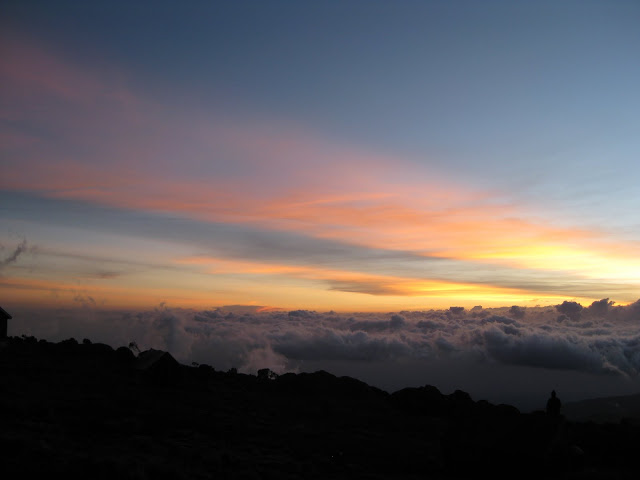Climbing Kilimanjaro is no joke. Many people discredit its difficulty because it is a mountain you can hike all the way to the top of without the need of technical rock-climbing gear. However, it is indeed a tough undertaking and the mountain deserves loads of respect.
We climbed the Machame Route, where the starting elevation for the hike is 5800 ft, roughly the altitude of Boulder. That means that throughout our 4 days of ascent, we would be climbing a total of 13,500 vertical feet. That is pretty badass. Luckily we had a LOT of help.
We assumed we would be in a group with other hikers going to the top, but that was not the case. It was just me, Ted, our guide named Goodluck (seriously), our assistant guide named Peter and 10, yes 10, porters to carry the food, tents, gear, etc. for our group. The fact that it was 2 of us and 12 of them was a little overwhelming and uncomfortable however, we were incredibly thankful for their assistance as it was quite nice to arrive at camp each day with the tent already set-up and warm food being prepared.

Our guides and porters, welcoming us to camp with a song. Hiking mountains is WAY easier with their help

Sarah and Goodluck
Though everyone who sets out to climb Mt. Kilimanjaro ultimately wants to get to the top, I’m pleased to report that the 4 days of hiking leading up to summit day are more-than-incredible in their own right: Walking through lush rainforests, seeing silhouette views of nearby Mt. Meru at sunset, camping on cliff edges overlooking spectacular valleys, walking through clouds and catching rewarding glimpses of Kili all along the way. The hiking alone is world class and THEN you get the opportunity to bag a peak.

Amazing views along the trek up

Nearby Mt. Meru in the background

Awesome views from camp

Still a ways to the top

Sunset above the clouds
Our guide was experienced and good. The motto on Kili is ‘pole pole’ (pronounced po-lay po-lay) – which simply means slowly slowly in Kiswahili. You walk slower than you want to (in fact, slower than we’ve ever walked before), but it keeps you from ascending too quickly and it allows you to keep a steady pace with minimal stopping. We’d walk about 6 or 7 hours a day with the maximum we went in one day being 12-13 km (~8 miles). We were both feeling really good, with no negative effects from the altitude – we were ready to conquer this beast.
Our 4th day of walking got us to Barafu camp (elevation 15,088 ft) around 3pm. Our job was to rest, eat an early dinner, and try to sleep as we’d be getting up at 11pm for our summit attempt. When we left camp around midnight, we were sore, we were tired (we had barely slept) and we were cold. Summit day had begun.